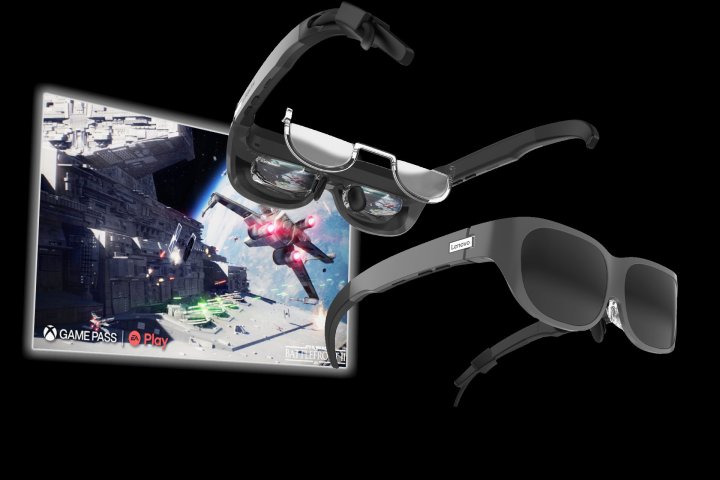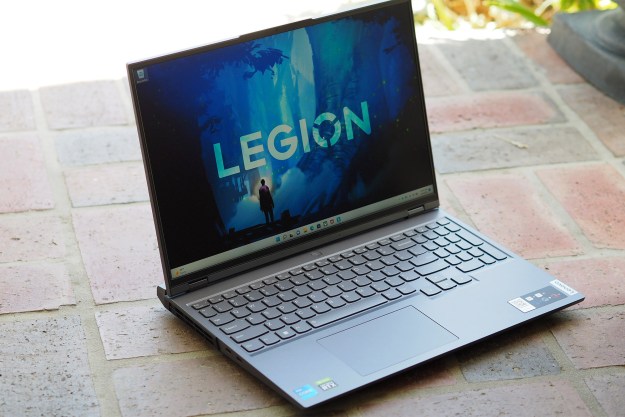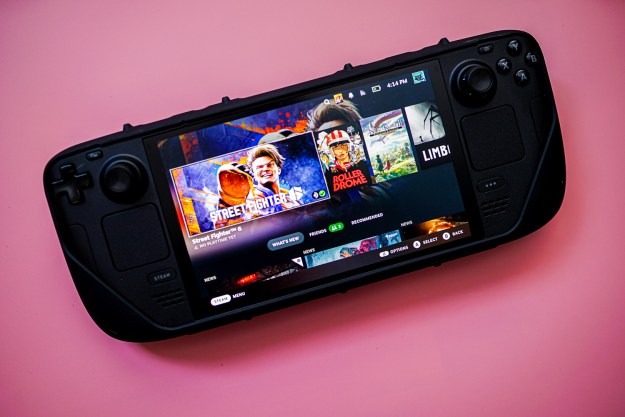
Lenovo’s new Legion Go handheld gaming computer has a built-in 8.8-inch screen, which is great for a pocketable device. But if you want more, you can supersize that to TV dimensions without sacrificing portability, thanks to the new Legion Glasses.
Legion Glasses have stylish frames and tinted lenses, resembling sunglasses. Hidden behind the shades are micro-OLED displays that provide 1920×1080 pixels per eye, so you get full-HD gaming on a large virtual screen in a compact, foldable form factor.
The earpieces have built-in speakers, so the Legion Go and Glasses are all you need for handheld gaming with big-screen enjoyment. While the attached 1.2m (3.9ft) USB-C cable is unusual, it eliminates the frustration of forgetting to bring the right cable.
Lenovo’s Legion Glasses can also connect to laptops, computers, tablets, and phones that support USB-C Alt mode. Many Windows laptops, MacBooks, and iPads with USB-C ports, as well as Android phones, are compatible.
Two adjustable nose pads and an anti-slip adapter should help with comfort. Lenovo includes a lens frame to hold prescription lenses.

Lenovo Legion Go paired with Legion Glasses sounds like an interesting combination. We’ll need to get some time with Lenovo’s solution to know how these compare to other popular smart glasses.
The Legion Glasses weigh 142g (5oz), field of view is 38 degrees, providing a density of 58 pixels per degree (PPD). The brightness of the display hasn’t been announced yet. We do know, however, that the glasses will be available in October, starting at $329.
For smart glasses, an ideal device must be affordable, lightweight, and contain a bright display with a wide field of view. For example, the market-leading Xreal Air smart glasses cost about $400, weigh 75 grams, and have a 400-nit display with a 45-degree field of view.
A heavier device will put pressure on the nose, a dimmer display will look translucent in a bright room, and a narrow field of view results in a smaller virtual screen.
If Lenovo’s Legion Glasses are similar to the Lenovo Glasses T1 we reviewed last year, they should be a nice option, particularly when paired with the Legion Go handheld.
Editors' Recommendations
- This is the best gaming keyboard I’ve ever used — and you’ve never heard of it
- Lenovo just made my favorite gaming laptop even better
- This was the most exciting gaming laptop I reviewed in 2023
- This is the best Lenovo gaming PC you can buy
- This essential GPU feature isn’t as simple as you think





